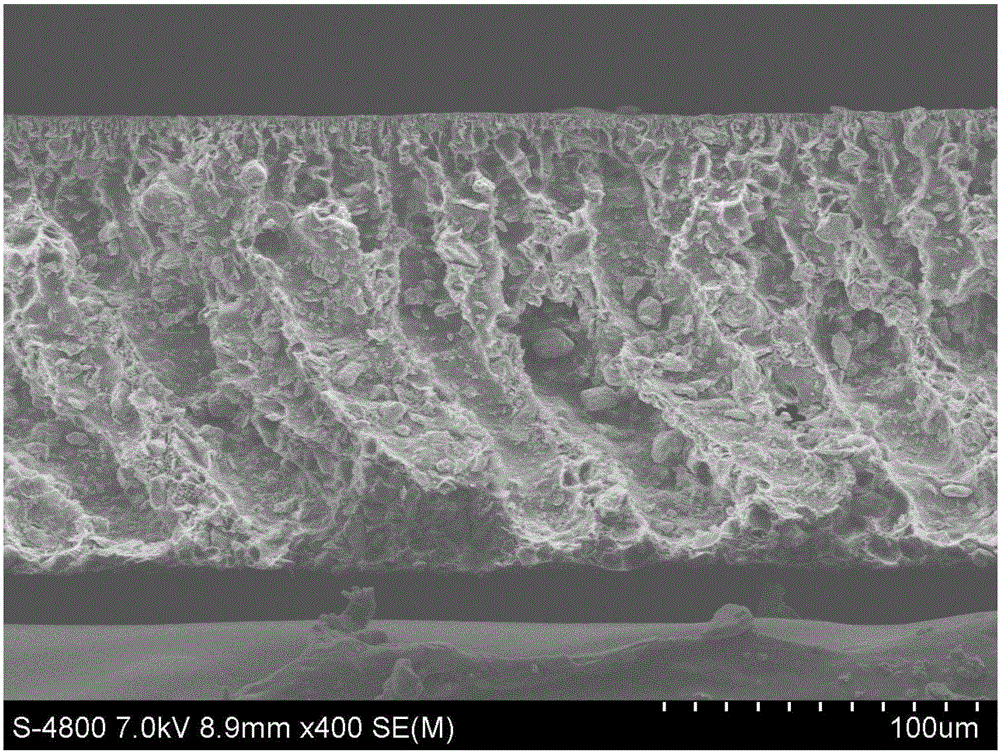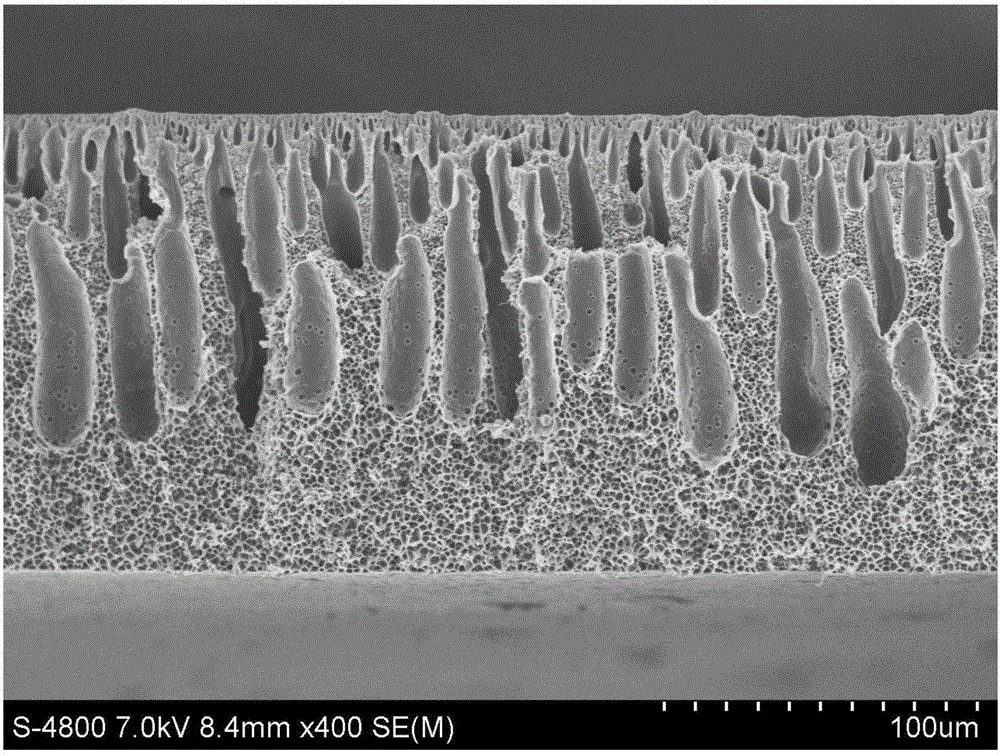Composite adsorption film, preparation method and application of composite adsorption film
A composite adsorption and composite hydroxide technology, applied in chemical instruments and methods, adsorption water/sewage treatment, other chemical processes, etc., can solve the problems of secondary pollution of water bodies, difficulty in recycling, etc. good effect
- Summary
- Abstract
- Description
- Claims
- Application Information
AI Technical Summary
Problems solved by technology
Method used
Image
Examples
Embodiment 1
[0026] (1) Add 18 parts by weight of polysulfone to 73 parts by weight of N,N-dimethylformamide, and vigorously stir at 65° C. for 2 hours to obtain a transparent organic solution.
[0027] (2) Add 9 parts by weight of the layered magnesium-aluminum composite hydroxide to the above organic solution, and vigorously stir at 65° C. for 24 hours to obtain a casting solution in which the layered magnesium-aluminum composite hydroxide is uniformly dispersed.
[0028] (3) At room temperature, the above-mentioned casting solution was evenly coated on a clean glass plate, and immediately immersed in deionized water to obtain a composite film with a thickness of 150 μm, which was dried at 70° C. and stored.
[0029] (4) Weigh 0.3g of dry composite membrane and place it in 50mL of high-fluorine water with a concentration of 10mg / L; after static adsorption at 25°C for 2.5 hours, the removal rate of fluoride ion was measured to be 66.3%, and the composite membrane’s fluoride ion The equili...
Embodiment 2
[0031] (1) Add 16 parts by weight of polyethersulfone to 67 parts by weight of N,N-dimethylacetamide, and vigorously stir at 65° C. for 2 hours to obtain a transparent organic solution.
[0032] (2) Add 17 parts by weight of the layered magnesium-aluminum composite hydroxide to the above organic solution, and vigorously stir at 65° C. for 24 hours to obtain a casting solution in which the layered magnesium-aluminum composite hydroxide is uniformly dispersed.
[0033] (3) At room temperature, the above-mentioned casting solution was evenly coated on a clean glass plate, and immediately immersed in deionized water to obtain a composite film with a thickness of 150 μm, which was dried at 70° C. and stored.
[0034] (4) Weigh 0.3g dry composite membrane and place it in 50mL high fluorine water with a concentration of 10mg / L; after static adsorption at 25°C for 2.5 hours, the removal rate of fluoride ion is measured to be 87.1%, The adsorption amount was 1.44 mg / g.
Embodiment 3
[0036] (1) Add 14 parts by weight of polyethersulfone to 57 parts by weight of N,N-dimethylformamide, and vigorously stir at 65° C. for 2 hours to obtain a transparent organic solution.
[0037] (2) Add 29 parts by weight of the layered magnesium-aluminum composite hydroxide to the above organic solution, and vigorously stir at 65° C. for 24 hours to obtain a casting solution in which the layered magnesium-aluminum composite hydroxide is uniformly dispersed.
[0038] (3) At room temperature, the above-mentioned casting solution was evenly coated on a clean glass plate, and immediately immersed in deionized water to obtain a composite film with a thickness of 150 μm, which was dried at 70° C. and stored.
[0039] (4) Weigh 0.2g of dry composite membrane and place it in 50mL of high-fluorine water with a concentration of 10mg / L; after static adsorption at 25°C for 2.5 hours, the removal rate of fluoride ion is measured to be 91.0%, and the composite membrane’s fluoride ion The a...
PUM
| Property | Measurement | Unit |
|---|---|---|
| Equilibrium adsorption | aaaaa | aaaaa |
| Adsorption capacity | aaaaa | aaaaa |
| Adsorption capacity | aaaaa | aaaaa |
Abstract
Description
Claims
Application Information
 Login to View More
Login to View More - R&D
- Intellectual Property
- Life Sciences
- Materials
- Tech Scout
- Unparalleled Data Quality
- Higher Quality Content
- 60% Fewer Hallucinations
Browse by: Latest US Patents, China's latest patents, Technical Efficacy Thesaurus, Application Domain, Technology Topic, Popular Technical Reports.
© 2025 PatSnap. All rights reserved.Legal|Privacy policy|Modern Slavery Act Transparency Statement|Sitemap|About US| Contact US: help@patsnap.com


